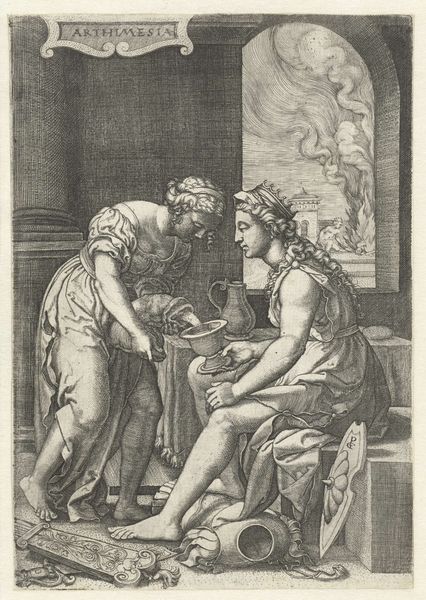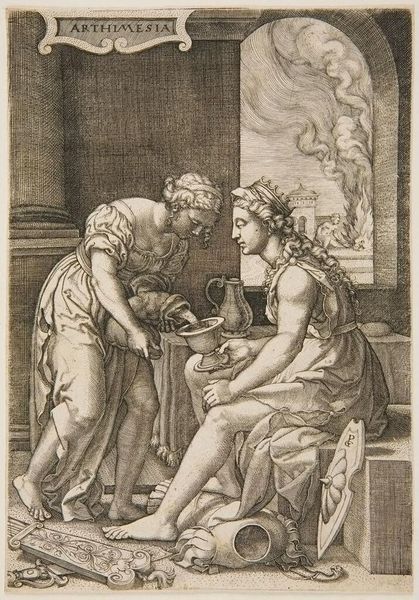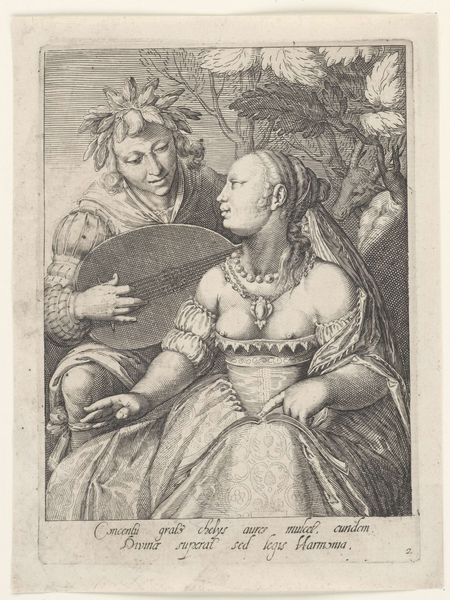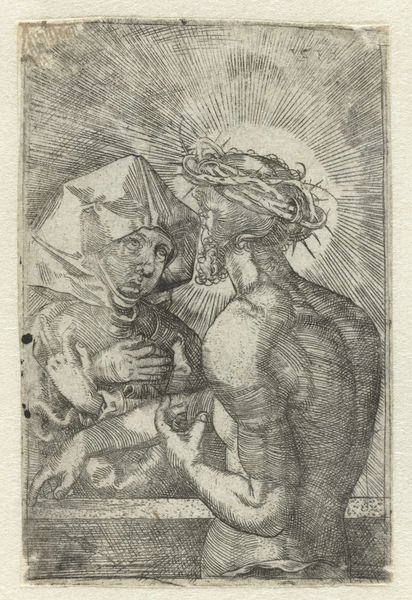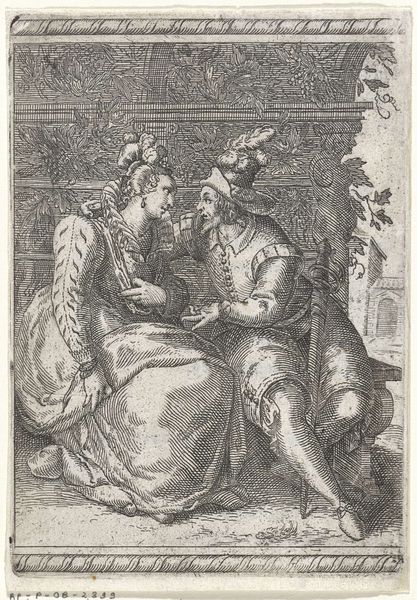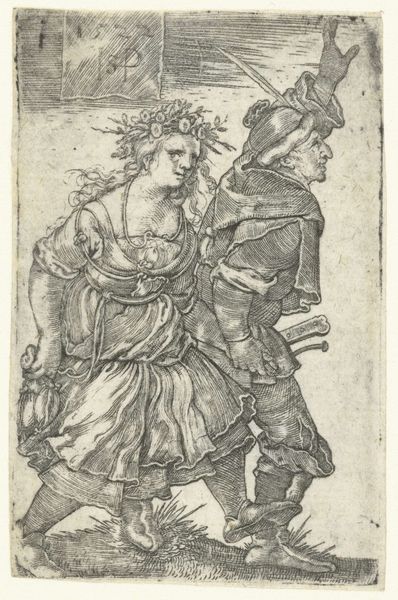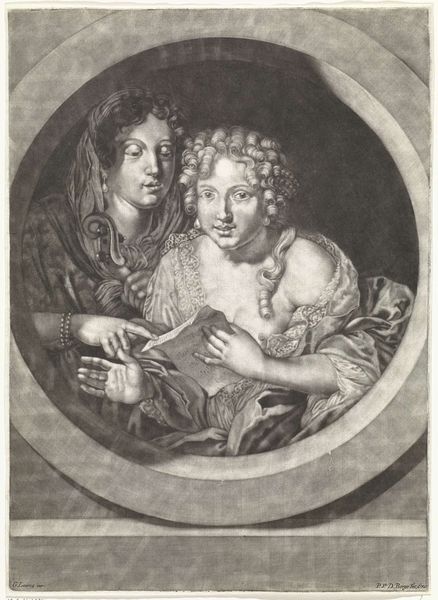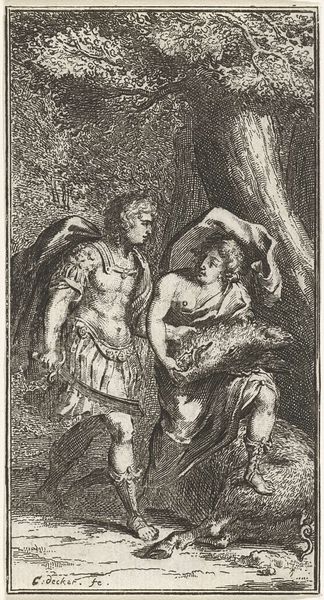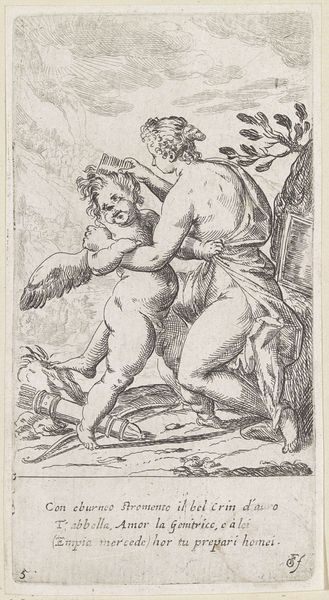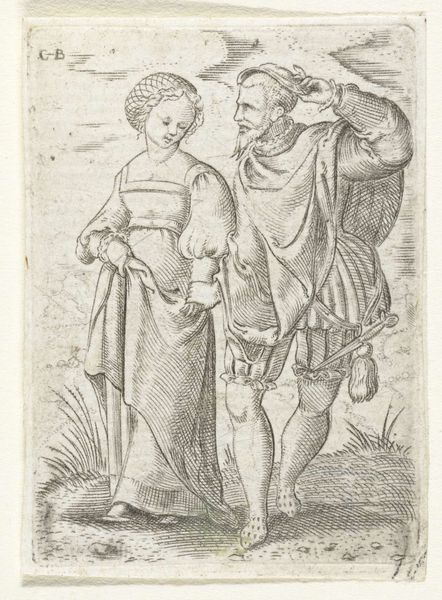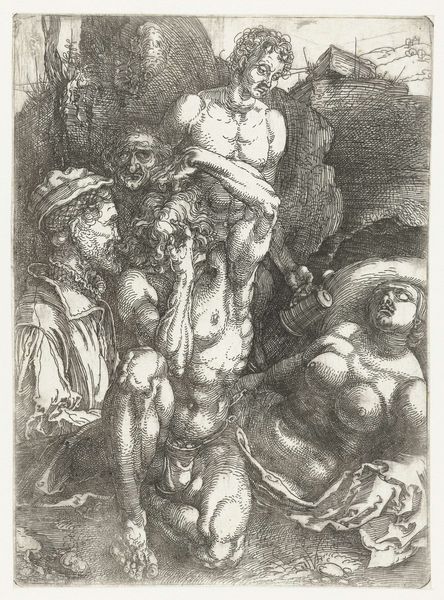
print, engraving
#
allegory
#
narrative-art
#
baroque
# print
#
figuration
#
form
#
portrait reference
#
line
#
portrait drawing
#
genre-painting
#
engraving
#
realism
Dimensions: height 435 mm, width 300 mm
Copyright: Rijks Museum: Open Domain
Editor: This engraving, "Ongelijke liefde," or "Unequal Love," by Adriaen Matham, dates from 1615 to 1631. It’s currently held at the Rijksmuseum. The piece definitely evokes a sense of unease; the contrast between the two figures is quite stark. What do you see in this work that maybe I'm missing? Curator: This print plunges us into the uncomfortable dynamics of power and exchange, doesn't it? Look at the way Matham depicts the older figure, adorned with opulent furs and clutching a purse – symbols of wealth and dominance. Then contrast that with the younger figure, whose vulnerability is emphasized by her exposed neckline. Editor: I do notice that, the sort of trading places implied. It's interesting and definitely hints at class disparities and the economics of relationships in that era. It feels deliberately confrontational. Curator: Exactly. Think about the social context. Who was able to access art? Who were these images meant to titillate or even caution? This print isn't just a snapshot of a relationship, but a commentary on broader societal issues, like the commodification of intimacy and the disparities in wealth that allowed such exchanges to occur. What's your reaction to how gender plays a role here? Editor: That's really insightful. It makes me think about the female figure's agency – or lack thereof. She seems more like a passive object in this transaction. It is commentary on societal roles forced onto women in the 17th century. Curator: Precisely! It’s a sharp critique of those imbalances. I think this reminds us how art can both reflect and reinforce social norms, but also serve as a catalyst for questioning them. It prompts important conversations about inequality that we continue to grapple with today. Editor: That really shifts how I see the artwork now. I'm definitely going to remember that and consider more of the history surrounding it when studying other pieces.
Comments
No comments
Be the first to comment and join the conversation on the ultimate creative platform.
